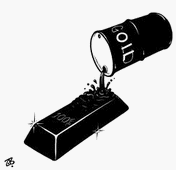8 REASONS WHY FEBRUARY 29th WAS THE MOST IMPORTANT DAY OF TRADING THUS FAR IN 2012
From a purely price action, macro variable perspective, today was the most important day of trading we have encountered thus far in 2012. It marks a point where the nature of the markets may change from docile and smiley faced to more aggressive and nefarious. We have entered a window in time and price where the price action will likely be much more choppy and less "trend friendly" if you will. Here are the reasons one by one, followed by illustrations: - AAPL was mentioned in a post last night. Today was the icing on the cake. Volume was substantial while the price ended right in the middle of its range. Volume today was the most for an up day since the enormous earnings gap up over a month ago. The price action screamed of distribution as the stock was essentially spinning while large sellers came into the picture distributing shares throughout the day. AAPL has crossed a key round number (500) by almost exactly 10%. The 10% number seems to be the "get everyone to believe" cushion following the obliteration of a key round number that everyone is watching. We eclipsed the $500 million market cap number as well...another key round number. And we have the generational trajectory that AAPL has now exceeded acting as gravity beneath the stock. AAPL is THE market leader. Therefore, it needs to be a prime consideration in any projection for a disruption in trend. - The Nasdaq Composite hit the generational trajectory point I mentioned last week on the dot today and proceeded to put in a high volume reversal. The chart is below. This is significant in that it shows that the Nasdaq is already recognizing this as a formidable opponent going forward. The recognition of this point as an opposing force creates a window. That window creates a disruption in trend that will cause the market to become choppy from this point forward. Again, I have illustrated these thoughts below to clarify my thinking. Are we going to tank back to the January lows? Absolutely not. I said choppy. Not an all out bear. It's going to become a more challenging environment into April and May. - The Nasdaq 100 hit a high of 2645 today. 5 points short of the 2650 point I mentioned in this weekend's chart review. This qualifies as a touch of the generational trajectory point. Just like the Nasdaq Composite, this touch now opens up a window for questionable antics on behalf of the market. The ease of trend and profitability will shape shift going forward. Illustrations provided in the chart below. - The CRB (commodity...
SOME INDICATIONS FROM THE HOUSING SECTOR THAT SHOULDN’T BE IGNORED
I'll start by saying that I continue to be impressed by the manner in which key indices are forming a tight consolidation right above or below key levels of resistance/support. In a bull market of this nature, these types of patterns have a strong tendency of resolving to the upside. I don't think this one will be any different. I continue to believe that one more push up will begin a choppy sideways consolidation into April/May, at which time some real downside volatility will become apparent. I am, however, not closing myself off to the possibility that the strength and power of this market is being greatly underestimated by the vast majority, myself included. I think the next push to the upside will give us some very real indications of what kind of monster we are dealing with here. There are subtle (or not so subtle depending on how you choose to look things) hints in the markets that there is something very real bubbling beneath the current economy. Particularly in the housing sector. As we all know, home prices and the numerous shocks created as a result of America's piggy banks being broken and raided by market forces has caused a good deal of the economic strife we are dealing with today. It is only natural to assume a housing sector that can actually stand on its own two feet would be a positive for the overall economy. And stand on its own two feet is all we can ask for. The days of double digit percentage returns in home prices are gone and won't be coming back anytime soon. However, a housing market that can work through excess inventory by creating a comfortable environment for would be home buyers to make a commitment is not that far out of reach. The key in creating that comfortable environment is the promise of increasing job creation and stability in the employment market. Nothing else will influence the market as graciously and generously as a sustainable uptick in job creation. Unfortunately, predicting job numbers going forward is no different than predicting stock prices. They do fluctuate. But there have been signs of promise recently. Take the 4 week average of jobless claims which is sitting at a 4 year low currently. And then we have my favorite, which is market action. What is the market telling us with respect to housing? Let's look at a few key components. Home Depot, Whirlpool and Bank of America. All companies that were shelled by the housing debacle. They are certainly singing a different tune now and it is convincing enough of a tune that...
CRUDE OIL NEEDS TO BE STUFFED BY THE BEARS THIS COMING WEEK OR ELSE……..
Those of you who have been following along for more than a couple weeks know that I was short crude oil via SCO coming into 2012. Technically, the trade was based on a generational trajectory point that had served as solid resistance for sometime now. I covered that short during January for what was essentially a break-even trade. At the time, I discussed the fact that the consolidation in crude oil was going on for too long. It has been my experience that when short-term trades fail to reward you after a several week period of time, it is best to move onto the next show. This "time stop" strategy turned out to be correct in this particular circumstance. Here is a long-term chart of crude oil showing the generational trajectory points that it has been contending with over the past few months. The second chart is a 9 day chart that provides a closer look at these significant technical points. click chart to...
WHEN RESISTANCE TURNS INTO SUPPORT: A LOVE STORY
I tweeted today that an important technical phenomenon was taking place in both the Dow and Nasdaq simultaneously. They are both hanging out around generational trajectory points and in both instances, the trajectory points have turned into support areas instead of acting as resistance. This is bullish over the near-term and gives a very strong indication that another push higher is coming. Especially when considering how technically sound the consolidation has been within the current uptrend. Here are the charts of the Nasdaq and Dow. click chart to...
THE NASDAQ IS GIVING AWAY A LOT OF DETAILS ABOUT HOW AND WHEN A MARKET TOP WILL FORM
Both the Dow and the Nasdaq are moving along some murky water in terms of generational resistance points. I continue to believe that we don't see them broken with any real conviction until the second half 2012. They are just too substantial to be taken out without a significant amount of sideways chop in order to build up some firepower. Here is a look at what are some very important generational resistance points for the Nasdaq and how they coincide so well with what I discussed regarding the Dow Jones Industrial Average last night. The first chart shows the origination points of the resistance in order to gauge their significance and the second shows how they are influencing the market over the short-term: click chart to...
THE MARKET MAY BE FEELING DEVILISH AND I PLAN ON DOING NOTHING ABOUT IT
I posted this chart of the Dow over the long weekend. A move over the 13,000 mark could extend all the way up to 13,200 to flush out the remaining shorts and add more bulls to the picture. A 200 point move over the 13,000 mark would be enough to get the media going full blast on the bull market train. This in turn would translate to speculative, inexperienced money flowing into the market. You know...the kind of money that the market loves to dissect with a pitchfork and stomp into puree with black steel-toe boots while listening to the Ozzy Osbourne that would decapitate live bats. Speculative, inexperienced money has a way of bringing out THAT side of the market. It creates instability and in turn, short term tops. So what is my game plan to deal with the devilish side of the market perhaps rearing its head in the coming weeks? I plan on..........sitting tight. I'm not going to hedge. I'm not going to attempt to sell short stocks. I'm not going to move into cash. At most, I may trim a couple holdings. That is if they hit my price targets. Being in buy and hold mode means not getting cute around short-term turning points. You deal with the inevitable downside volatility. Why? Let me tell you why: If you get in the habit of attempting to pick off short-term turning points during a bull market, you will begin to think that short-term turning points are falling from the sky like Jeremy Lin references. Every point suddenly becomes a short-term turning point. If I had been looking for a short-term turning points to hedge or liquidate, I would have been hedged or in cash multiple times by now, only to be forced to buy back my hedges or reestablish longs at higher prices. It's a game not worth playing in strong bull markets. When it's time to get short or hedged the market will let you know. It usually does. You just have to be willing to listen. I was listening in late-July and sent out this note as the data became clear. Sustainable tops give away much in terms of clues that the tide is about to shift. In terms of important clues in the here and now, there really are none. All signs continue to favor the...
WHY BEING PRAISED FRIGHTENS ME AS AN INVESTOR
I vividly remember at the top of my hedge fund performance in early 2004, I received a call from an investor asking how much we were up for January? He realized that things must have been going well as we were coming off a stellar year where I was the top ranked macro hedge fund due to loading up on stocks as the US attacked Iraq in 2003. I always kept things extremely transparent so that my investors would have a general sense of where the portfolio was in any given month. When I told this investor that we were up over 40% for January alone, he audibly gasped, started mumbling and began reaping praises upon me that almost made me float through the roof of my office as my head expanded in size. I was in my 20's then, so you can imagine how the testosterone, mental hubris and feeling of general invincibility that I already had began expanding into stratospheric levels. I will never forget that conversation as it very nearly marked the peak in the NAV for my fund. I have experienced other points of contact that marked important turning points for the market as a whole. Let us not forget only recently, on October 2nd (two days before THE market bottom), I had a visitor to my website that arrived via googling the following "END OF IT ALL ECONOMIC ARMAGGEDON ". I later wrote an impassioned plea to that person to contact me as his (yes it was a man...only a man would panic and then turn to google for advice on how to deal with the end of times) tendency towards emotional thinking during adverse situations could be turned into an indicator to trump all other indicators. I never received a reply. Over the years I have come to see points of contact, whether in praise or in anger, as a reflection of investor emotion and a sign that perhaps the tide for myself or the market may be turning. Emails that offer praise, such as the one I received this weekend asking when I would be posting my next "The Gun" analysis, have a way of being frightening as experience has shown me that investor comfort often takes the form of "give me more" picks. These types of inquiries and emotional reactions to either good or bad times should not be used as the be all or end all of indicators. They simply reflect emotional responses to the market. I take an investor emailing me to ask when I will be posting future stock analysis as a compliment. I also take it as...
HOW FEELING FROGGY IN THE MARKETS LEADS TO BEATDOWNS
As we approach the 13,000 level on the Dow, in the process breaking up and through the generational resistance point I have been discussing for the past few weeks, it is important to take note of what has been working in this bull market. In fact, this is what works in most all bull markets. No rocket science involved. In fact, not much of anything involved except for one thing. That one thing is having common sense enough to realize what the current condition of the market is and sit tight in positions that reflect the condition. Bull markets, with the exception of 1999, are not meant to be traded furiously. They are not meant to be guessed, poked and prodded for weakness. By that I mean the constant fascination and obsession with making sure you don't get hit with a pullback, giving into some short-term pain. Short-term pain is part of being in a bull market. There are very few that can guess what the correct time will be to initiate hedges to counter any short-term pain they may experience at the hands of the market. It's a game that should be avoided at all costs. We are in a time and place where the abundance of information at an investor's fingertips literally makes it seem perfectly acceptable to feel froggy in the markets, jumping from place to place. Excess trading activity is after all reflective of the increased volume of information. Excess information and the activity resulting from the digestion of that information is only normal. In the end what all of that noise amounts to is confusion. You have a thousand competing angles in your head when only one angle should matter. That is at what angle the current uptrend or downtrend is proceeding. In all likelihood, a breakout over 13,000 will occur soon. I think that breakout will fail. That doesn't mean you should hedge your exposure or move into 100% cash. If you want to trim some positions, be my guest. It's probably a prudent decision. Even if we are at a point where we are putting a substantial top (highly unlikely, by the way) you will have plenty of opportunity and fair warning to get out of the way. Tops - especially after the kind of run we have had - are a process. I haven't come across one major top in roughly 18 years of grinding that hasn't given whomever wanted to liquidate multiple opportunities to do so. If you're feeling froggy, go to the gym and jump rope. It will be cheaper and better for you than jumping from place to place in...
CLINGING TO ANALYSIS THAT HAS BEEN PROVEN WRONG IS A DEADLY DISEASE
It's easy to get caught up in all the noise that is the countless number of gauges investors use to measure the markets. What investors forget amidst the mental circus that comes of deep market analysis is that it is NEVER the indicator or data that matter. The only matter of any substance is how the market reacts to that indicator or data. I am reminded of this daily recently as I see seemingly smart market participants clinging onto data points that lost their relevancy weeks or months ago. It's like that guy you see walking down the street with long, bleached blond hair, netted gloves, leather pants and a Motley Crue T-Shirt. You can see that he is clinging on for dear life to the 1980's as that was the only period that worked for him. He doesn't realize that it doesn't, hasn't and won't work again. Move on. It doesn't matter the gauge. I have seen investors cling onto valuation measures such as P/E ratios, various gauges of cash flow and relative value comparisons as fervently as the guys who cling onto technical measures that have stopped working. Value traps are built off of investors who can't let go of the fact that while their ratios say the stock is a buy, the market is not in the mood to pay attention. When the market isn't in the mood to pay attention, what you consider brilliant analysis is no better than using the mating patterns of Tibetan Antelopes to gauge whether a stock is a buy or sell. What is worse than all are those who cling onto technical information that they gauge as being favorable to their position and simply can't let go. What is dangerous about technical analysis to the average investor - who doesn't have bullshit goggles that come with years of experience - is that technical's are extremely subjective. You can twist around any technical indicator to say what you want, when you want. Therefore, if an indicator isn't responding to the market, an investor can contort that indicator to correspond to his or her bias. In the end the gauge you are using to determine your investment bias is only relevant if the market recognizes it as such. There is nothing in the markets playbook that says your particular brand of analysis must be respected. There is also nothing in the markets playbook that says your brand of analysis doesn't open you up to the risk of ruin. This is a subjective game that we play on a daily basis, with a dangerous and fickle opponent. Your ability to adjust is all...
THE POWER OF GENERATIONAL TRENDLINES AND WHAT THEY MEAN FOR THE CURRENT MARKET
I speak about generational trendlines now and then. I define them as trendlines that exert their influence over long periods of time that span multiple investing generations. These trendlines can often have origins that go back many decades. When the S&P was battling with the 1230 level from August until nearly the end of 2011, there was a generational trendline sitting right in the middle of that range dating back to the early 1970's. That trendline marked the bottom for the 1987 crash. The bottom for the 90/91 market that saw the "tech boom" kickoff soon thereafter. Its influence was obviously felt during the second half of 2011 as the 1230 level was a consistent battle zone between the bulls and the bears. The Dow has been battling the same types of generational trendlines since the 2011 top. The origins of the pink trendline that you see in the chart below go back to the 1930's for the Dow. This trendline marked the 1966 top that led to a 15 year sideways range for the Dow. It marked the 2003 low that saw the markets rise into the 2007 top. These trendlines should never be used as absolute points of support or resistance. Rather they should be used as guideposts or benchmarks to gauge how strong or a weak a market is currently. Think of them as 100 pound dumbbells that the market has to lift. If the market lifts the dumbbell with ease, meaning that it breaks out over a generational resistance line, as an example, then the market can be deemed as strong. If, however, the market breaks down violently off of the generational trendline, then the market can be deemed as being weak since it dropped the weight. You can see in the chart below we are right up on the pink trendline and consolidating below it. This leads me to believe that the Dow wants to break up through the trendline, above 13,000. You can see that the Dow had three counterfeit moves about the generational trendline in 2011 before breaking down severely. This was much like the three counterfeit moves below the trendline that I outlined in the "Most Important Chart I've Ever Posted" posting in mid-December. It could be that the Dow wants to break up through the trendline and then break down for a correction before trying to move up in a substantial manner later this year. It could also be that the Dow simply breaks up through the generational trendline and accelerates, not looking back. The latter scenario is highly bullish. Highly bullish doesn't do it justice. It is a monstrously...












